Speak to one of our experts now about this offer
Call us on - 0800 092 4444
Or drop into your local Kuoni store to find out more
Speak to one of our experts now about this offer
Call us on - 0800 294 9710
Or drop into your local Kuoni store to find out more
Speak to one of our experts now about this offer
Call us on - 0800 294 9728
Or drop into your local Kuoni store to find out more
Chennai & Tamil Nadu Holidays
Chennai, the cultural capital and largest city of Tamil Nadu, sits on the Bay of Bengal’s Coromandel Coast. Formerly known as Madras and blessed with a rich heritage of arts and culture, Chennai is known as the ‘Gateway to South India.’ Home to Fort St George, the first bastion of British power in India, and its museum which features relics from the British Raj, as well as a wealth of Hindu temples and architectural delights, the city effortlessly blends a strong British influence with traditional Tamil Hindu culture.
Holidays in Chennai & Tamil Nadu

- Chennai & Tamil Nadu

- Chennai & Tamil Nadu

- Chennai & Tamil Nadu
Steeped in history, Taj Coonemara has been serving guests for over 100 years.
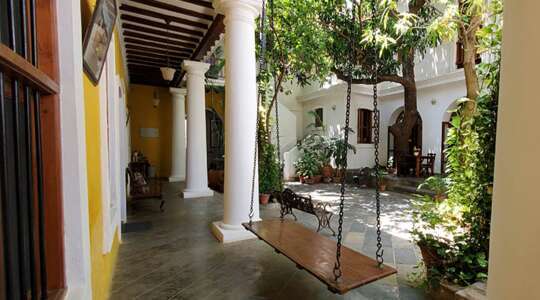
- Chennai & Tamil Nadu

- Chennai & Tamil Nadu

- Chennai & Tamil Nadu
Set within 40 acres of tree-shaded gardens right on a pristine kilometre-long beach.
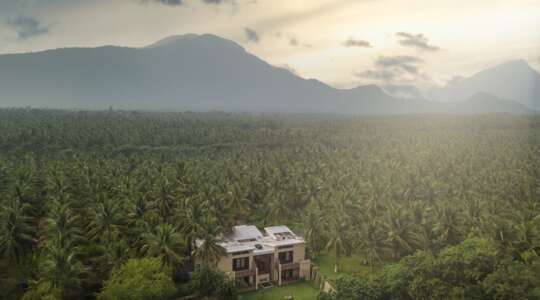
- Chennai & Tamil Nadu
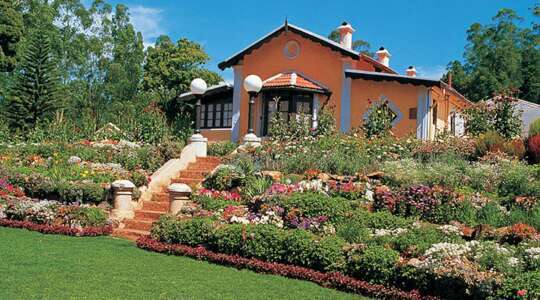
- Chennai & Tamil Nadu

- Chennai & Tamil Nadu
You may also like
Chennai's Koyambedu Vegetable & Flower Market
Rise early for a visit to Chennai’s vibrant and lively Koyambedu fresh vegetable and flower market and experience a riot of colours as the vendors set up for the day. The market is one of the largest of its kind in India, covering the area of three football pitches. You’ll make your way through the three sections – the flower market, fruit market and vegetable market – and discover how hundreds of tonnes of produce are transported here from numerous nearby villages.
Pondicherry's French Quarter Walking Tour
Pondicherry holds so many fascinating secrets that you’d miss if you walked around by yourself. The British conquered a massive part of India, however Pondicherry was ruled by the French, so the whole ambience and culture is completely different. There is the Tamil Quarter as well as the French Quarter, and they’re equally important, so you have to visit both to get a clear picture of this town.
Pondicherry holds so many fascinating secrets that you’d miss if you walked around by yourself. The British conquered a massive part of India, however Pondicherry was ruled by the French, so the whole ambience and culture is completely different. There is the Tamil Quarter as well as the French Quarter, and they’re equally important, so you have to visit both to get a clear picture of this town.
There’s the beautiful French colonial architecture, which has nothing to do with the French architecture in France. On this three-hour walking tour you will be taken along the promenade and shown some of the French houses and explain their unique design. Then you will be taken to the Indian side where it will be explained how they’re built and why, which involves a combination of science, superstition and religion.
The town’s spiritual side is just as eclectic. You will visit its most famous temple, dedicated to Ganesha; visit the renowned ashram; and to a couple of churches. Along with the sights, there’s a lot of storytelling to help people understand something of the ethos of Pondicherry. A stop will be made for a coffee, a South Indian filter coffee made with chicory and coffee and served in a bowl with a small glass. It’s just coffee, so simple, but it brings together the French and Indian influences and is a classic South Indian experience.
Peacock Trail
The Peacock Trail takes place in Mylapore in the heart of Chennai, a neighbourhood that’s much older than the city itself. When the British arrived, it was a village with pretty houses and ancient temples dating from the time when it was an important port for the Pallava empire, and today it’s a perfect place to show people something of the way of life in the city. The tour is led by people from different walks of life: writers, artists, musicians, bankers and historians, all with a deep interest in the city and a passion to tell its stories.
The Peacock Trail takes place in Mylapore in the heart of Chennai, a neighbourhood that’s much older than the city itself. When the British arrived, it was a village with pretty houses and ancient temples dating from the time when it was an important port for the Pallava empire, and today it’s a perfect place to show people something of the way of life in the city.
The tour is led by people from different walks of life: writers, artists, musicians, corporate people, bankers, historians, all with a deep interest in the city and a passion to tell its stories, of which there are so many. A lot of them are connected to the Kapaleeswarar Temple, where the trail starts. It’s a very famous temple of Shiva, the Hindu god, and the guides focus on the architecture and tell stories about what happens in the temple.
Afterwards, wander through Mylapore’s tiny lanes, which are lined with small houses that were built almost 500 years ago. Learn about the history of those houses and the patterns drawn on the ground outside them and the evil eye that the owners hang outside. There’s a bazaar, a huge temple tank built on land donated by the Muslim ruler at the time and a house belonging to the family of a Brahmin priest, which has some fascinating features. The tour finishes in the old Portuguese settlement of Sao Tome where there is a beautiful church with some unusual decorations.
Trace the Classical Beats of Bharatanatyam
Bharatanatyam is one of the classical dance forms of India. It thrived in the temples, where it was performed for that place’s particular deity. It was designed as a visual way of communicating stories from sacred Hindu texts so that people who were not educated could understand them. Your guide will explain the various hand gestures used to communicate as students perform for guests.
Bharatanatyam is one of the classical dance forms of India. It thrived in the temples, where it was performed for that place’s particular deity. It was designed as a visual way of communicating stories from sacred Hindu texts so that people who were not educated could understand them: the conduct of the society, what is wrong, what is right, the mythological stories. Today it has become an entertainment, but also used as an art form as a language to reach out to people about modern themes. It takes close to 10 years to become proficient in Bharatanatyam.
The session starts with an explanation of how the art form emerged. The technical aspects are then demonstrated, such as the basic steps and how they’re combined to make a sequence. Your guide will explain the various hand gestures used to communicate and the students perform for guests. The end of the session is very interactive, and guests have the chance to show some of the gestures they have learnt. This experience gives people a little gist of what this art form is: where it's coming from, what the basic positions are and other elements such as the music, make-up, and costume. \
Creole Cooking Class
The food in Pondicherry is unique, a fusion of French and Tamil traditions that’s very much part of its cultural identity. During this cooking class you will get to learn what Creole food is, what makes it different and how to prepare it. It’s a really hands-on experience.
The food in Pondicherry is unique, a fusion of French and Tamil traditions that’s very much part of its cultural identity. During this cooking class you will get to learn what Creole food is, what makes it different and how to prepare it. It’s a really hands-on experience and the three hours goes by very quickly.
After an introduction to the story of how Creole cuisine came about, you will talk about the dishes that you’re going to prepare together. A lot of them are based around mutton, such as meatballs cooked with coconut milk, curry leaves or deep-fried chops in chickpea batter flavoured with fennel seeds. If people prefer, vegetarian or chicken options can be prepared.
Start by washing and chopping the vegetables – typically beetroot, potatoes, carrots, onions and tomatoes, plus ginger and garlic – and soaking them in vinegar or turmeric water as a disinfectant. Then start to make the sauces and cook the meat, spices and vegetables and prepare something like a beetroot and egg salad. The last thing that is made is the Rava cake, which is made with semolina. Finally, as you sit and eat all the delicious things you’ve made, there is a chance to ask any final questions to your host.
Kizhur Village Visit
The countryside beyond Pondicherry has so many stories and this tour was created to show guests something of the way of life, the history and the natural beauty. Kizhur is not only authentic, but it’s actually an important place in the story of how Pondicherry got its freedom.
The countryside beyond Pondicherry has so many stories and this tour was created to show guests something of the way of life, the history and the natural beauty. Kizhur is not only authentic, but it’s actually an important place in the story of how Pondicherry got its freedom. You will start at the Kizhur Monument, which commemorates the signing of an agreement in 1954 to make the territory a part of India instead of a colony of France.
Not far from Kizhur, there’s a huge 60-year-old banyan tree that’s been looked after by the same woman for more than 50 years. Its main claim to fame is that it was one of the locations for The Life of Pi film. You will then head into the village to discover how people go about their daily routines. You will visit the house of someone who still makes pottery in the traditional way and you can try creating something for yourself. Walk through the village and see farmers working in the fields growing tapioca or guavas. Visit a coconut grove to watch how the locals pick the fruit. You can also ride in a bullock cart and watch the cows being milked.
Perhaps the most unusual sight for visitors is the nearby temple, which is called ‘a temple of dolls’. It’s surrounded by brightly coloured statues that people have been putting there for around 100 years when their prayers to Ayyanar, the village deity, come true. It’s quite a unique feeling walking among them as there are around 10,000, some of which are as much as 10 feet tall.
Wake-up Pondi Cycling Tour
Bicycle is a perfect way to explore the heart of Pondicherry as you can go along the smallest and quietest of lanes, see the small details you’d miss from a car or bus and really experience the sights, sounds and smells of the town in the cool of the morning. During this relaxed guided two-hour ride, you will visit all four heritage districts – the Muslim, Indian, Sri Aurobindo ashram and French quarters.
Bicycle is a perfect way to explore the heart of Pondicherry as you can go along the smallest and quietest of lanes, see the small details you’d miss from a car or bus and really experience the sights, sounds and smells of the town in the cool of the morning.
During this relaxed guided two-hour ride, you will visit all four heritage districts – the Muslim, Indian, Sri Aurobindo ashram and French quarters. There will be lots of photo stops. Visit Goubert Market, where there are vendors selling everything from fruit and vegetables to flowers and fish. You will also explore Kuruchikuppam village, where the fishermen live. Visit the basilica church and also see the mosque where The Life of Pi was filmed and a Hindu temple dedicated to Ganesh. The main sight in the ashram area is a modernist building created by a Tokyo-based Czech architect.
You will be cycling on vintage cycles as they’re very strong and comfortable that have been beautifully decorated in bright colours so don’t be surprised if the locals stop and take your photo.
Rameshwaram - full day city tour
Although lesser explored by foreign visitors, Rameshwaram, also known as Pamban Island, is one of India’s most beautiful religious sites and one of the four holiest places in the country that a Hindu must visit in his or her lifetime. Until 1918, people could only visit this island via boat but now you can take a train ride on a narrow, hundred-year-old bridge.
Although lesser explored by foreign visitors, Rameshwaram, also known as Pamban Island, is one of India’s most beautiful religious sites and one of the four holiest places in the country that a Hindu must visit in his or her lifetime. Until 1918, people could only visit this island via boat but now you can take a train ride on a narrow, hundred-year-old bridge.
On the other side of Rameshwaram, around 40km away, lies Mannar Island in Sri Lanka. The legend goes that Lord Rama, a Hindu deity, built a passage between the two with the help of his army of monkeys in order to rescue his abducted wife, Sita. So around 500 years ago you could walk from India to Sri Lanka. However, a cyclone hit washing away most of the strait leaving behind only a string of coral islands.
Rameshwaram’s principal temple, Ramanathaswamy, was built in dedication to Lord Shiva by the 12th-century Jaffna rulers. Later in the 16th and 17th centuries, the Sethupathi Kings who came from Hampi, made many additions such has the colourful corridors, the longest in all of India’s Hindu temples.
After lunch (own expense) visit Dhanushkodi, on the tip of the island and a real ghost town as no one lives there. Its inhabitants were tragically washed away by the same cyclone that demolished the passage to Sri Lanka with seven-metre-high waves. Today you can see a railway station, a post office and a few shops.
Foodie Tour
Madurai has been inhabited continuously for two or three thousand years, so has a very strong food culture. There are influences from the time of the Pandyas, the Nayaks and the Mughals, which has produced a fascinating mixture of cuisines that you don’t get anywhere else in Tamil Nadu. Exploring the city through its food is an enjoyable way to get to know some of its history and some of its places – every street and every corner has a story to tell and there’s often a foodie connection.
Madurai has been inhabited continuously for two or three thousand years, so has a very strong food culture. There are influences from the time of the Pandyas, the Nayaks and the Mughals, which has produced a fascinating mixture of cuisines that you don’t get anywhere else in Tamil Nadu.
Walking through the heart of the city you will get to areas such as Vilakuthoon where there’s a small cart selling paruthi paal – cottonseed milk – which is a sweet, spicy hot drink, a bit like porridge, that you get only in Madurai. Wander through the bazaar to see all the spices that are being sold there and check out some of the local food shops, many of which have been owned by the same family for decades. There’s a particularly quaint one that sells adhirasam, a traditional Tamil sweet that is made for all of our festivals, such as Diwali and Pongal. They serve it hot and crispy right from the stove, so it couldn’t be fresher. One speciality of Madurai is the kari dosa, which is topped with meat and eggs and is super-flavourful. Exploring the city through its food is an enjoyable way to get to know some of its history and some of its places – every street and every corner has a story to tell and there’s often a foodie connection.
Once Upon a Madurai
Once Upon a Madurai takes guests through the by-lanes of old Madurai on foot as the storyteller shares tales about history, mythology and customs. It takes you back 2,000 years to when the gods are said to have walked on Earth, and to the kings who built some of the monuments that you still see today and to Gandhi and his experiences in the city.
Once Upon a Madurai takes guests through the by-lanes of old Madurai on foot as the storyteller shares tales about history, mythology and customs. It takes you back 2,000 years to when the gods are said to have walked on Earth, and to the kings who built some of the monuments that you still see today and to Gandhi and his experiences in the city.
The city has a lot of character and life, and your guide will share many stories that will give you an insight into Madurai. You will pass by a shop that sells the different coloured powders that people put on their foreheads and explain why they wear the pottu. You will pass a Jain temple where you will see people going in and out in their traditional clothes. This tour showcases the charm and spirit of Madurai and its people.
Toy Train Ride
A trip on the Nilgiri Mountain Railway offers incredible scenery, impressive engineering and a real sense of nostalgia. Enjoy the different landscapes as the train travels along the winding narrow-gauge track. There’s always something to see on both sides of the line, and you’ve plenty of time to look at it as the train goes so slowly, especially on the steepest section, which is the only rack and pinion track in India.
A trip on the Nilgiri Mountain Railway offers incredible scenery, impressive engineering and a real sense of nostalgia. Enjoy the different landscapes as the train travels along the winding narrow-gauge track. There’s always something to see on both sides of the line, and you’ve plenty of time to look at it as the train goes so slowly, especially on the steepest section, which is the only rack and pinion track in India.
The railway operates between Mettupalayam and Ooty, climbing from around 330m to 2200m on the way, and you can feel the temperature change as you go along. At the bottom, there are coconut groves, banana plantations and paddy fields where you can see people working. Soon you’re in the forested hills, with steep rock faces, tunnels, deep gorges and lots of bridges – more than 250 on the 46km journey – and if you’re lucky, you might even catch a glimpse of a monkey or peacock. Towards the top, you will start seeing distant tea plantations and vegetable gardens in the valleys below.
There are some lovely old stations on the route that date from when the British built the railway in 1908. The train stops at a few where passengers can get off, have a chai and take pictures of everything from the views to the blue-and-cream-painted carriages and the vintage steam engine.
Sorry, your hotel is no longer available
Please check alternatives
-
{{item.body}}
-
{{item.body}}
Choose a departure date
{{store.searchDuration}} nights
Enter rooms & guests
Checking prices & availability

{{term}}, {{formattedDate}} for {{searchDuration}} nights

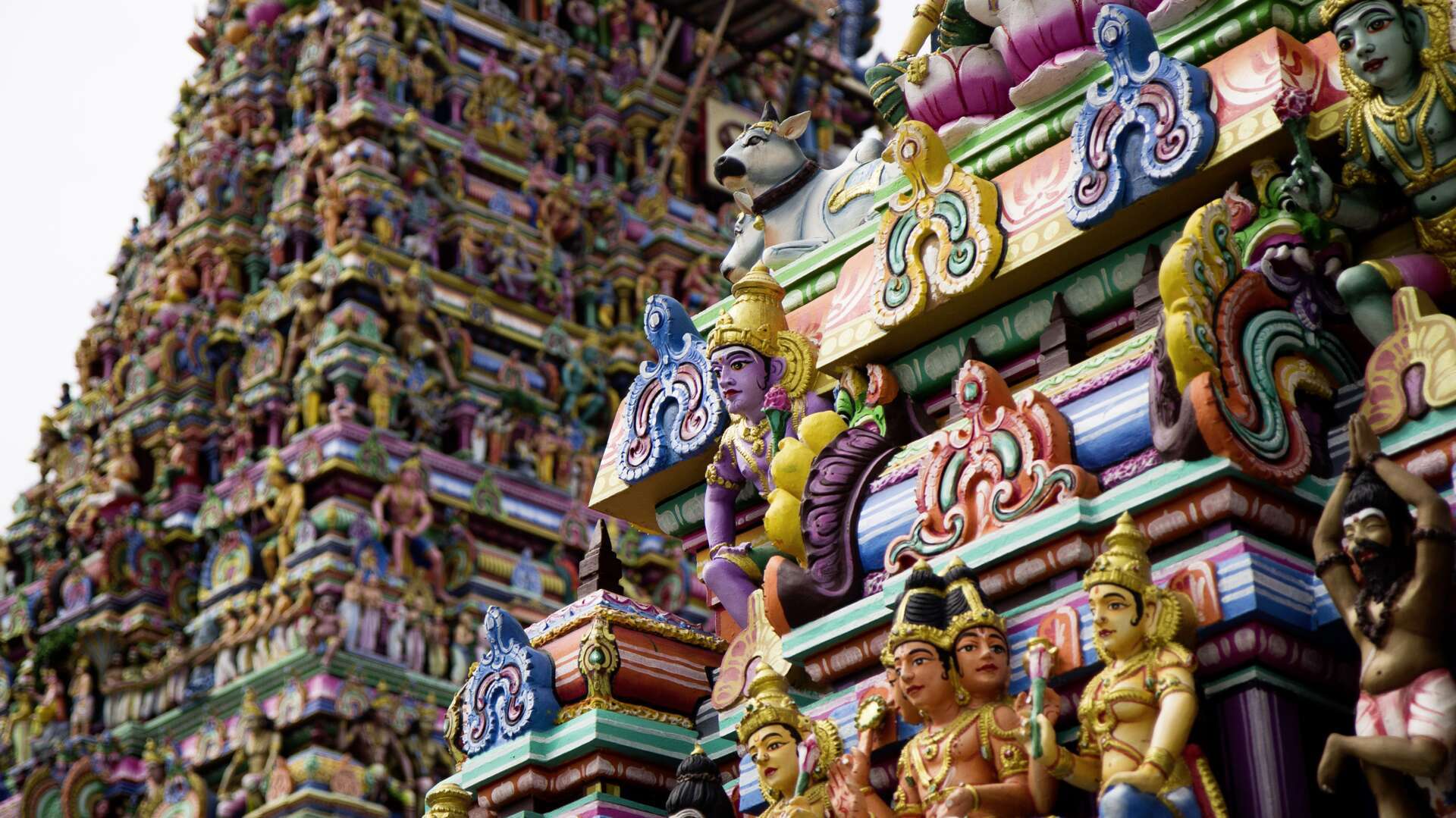




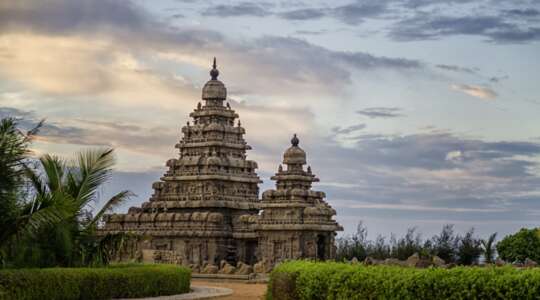
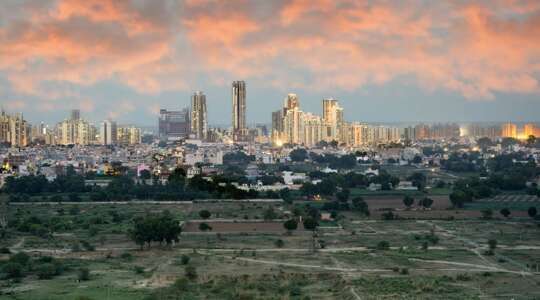

_w=126_h=31.png?v=d272c1958c6b4383fe76ca13ac1f42e2d91606e9)
_w=24_h=25.png?v=d272c1958c6b4383fe76ca13ac1f42e2d91606e9)
_w=24_h=25.png?v=d272c1958c6b4383fe76ca13ac1f42e2d91606e9)
_w=24_h=25.png?v=d272c1958c6b4383fe76ca13ac1f42e2d91606e9)